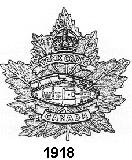 The Royal Canadian Armoured Corps Association (Cavalry) comprises the 21 regular and reserve force units of the corps, serving officers and non-commissioned officers, and nation wide representation from retired members. It was founded in 1910 as the Canadian Cavalry Association and for nine decades has represented the interests of the corps and the Canadian Army to government and the public. This predecessor group was a principal founding member in 1932 of the Conference of Defence Associations, Canada’s national voice of defence preparedness, now comprising more than two dozen organizations dedicated to ensuring combat capable sea, land and air forces.
The Royal Canadian Armoured Corps Association (Cavalry) comprises the 21 regular and reserve force units of the corps, serving officers and non-commissioned officers, and nation wide representation from retired members. It was founded in 1910 as the Canadian Cavalry Association and for nine decades has represented the interests of the corps and the Canadian Army to government and the public. This predecessor group was a principal founding member in 1932 of the Conference of Defence Associations, Canada’s national voice of defence preparedness, now comprising more than two dozen organizations dedicated to ensuring combat capable sea, land and air forces.
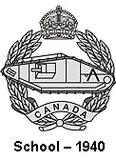 The government must be continually sensitized to the financial needs of the armed forces, even as dwindling strength is dispersed world wide in support of national policy. The Department of National Defence receives a diminishing portion of the national budget, yet the army in particular is challenged to meet an increasingly diverse mandate within this shrinking appropriations envelope. The association’s paramount objective is to articulate the concerns of the corps as a whole, as they relate to structure, equipment, manpower, personnel services and quality of life.
The government must be continually sensitized to the financial needs of the armed forces, even as dwindling strength is dispersed world wide in support of national policy. The Department of National Defence receives a diminishing portion of the national budget, yet the army in particular is challenged to meet an increasingly diverse mandate within this shrinking appropriations envelope. The association’s paramount objective is to articulate the concerns of the corps as a whole, as they relate to structure, equipment, manpower, personnel services and quality of life.
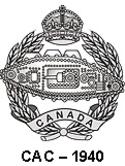 Government funding reductions of more than $5 billion since 1992 have unfortunately led to depleted operational strength, impaired training capabilities, compromised equipment modernization and replacement projects, and a deterioration in the standard of living of all ranks. These consequences have been exacerbated by incessant reorganization, downsizing and outsourcing, driven by the need to make the forces more and more cost effective, but which have also contributed to a deep sense of unease and the erosion of morale.
Government funding reductions of more than $5 billion since 1992 have unfortunately led to depleted operational strength, impaired training capabilities, compromised equipment modernization and replacement projects, and a deterioration in the standard of living of all ranks. These consequences have been exacerbated by incessant reorganization, downsizing and outsourcing, driven by the need to make the forces more and more cost effective, but which have also contributed to a deep sense of unease and the erosion of morale.
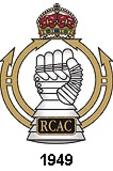 Much money and effort is being spent to publicize the change in DND, but it often relates to government efforts to downsize and cut spending across all departments, without regard to the special nature and requirements of military operations. Because the association has an arms length relationship with both DND and the government, it is able to champion these causes in behalf of the serving members of the corps. No opportunity is lost to convey current concerns to individual members of Parliament, senior military staff and the minister himself.
Much money and effort is being spent to publicize the change in DND, but it often relates to government efforts to downsize and cut spending across all departments, without regard to the special nature and requirements of military operations. Because the association has an arms length relationship with both DND and the government, it is able to champion these causes in behalf of the serving members of the corps. No opportunity is lost to convey current concerns to individual members of Parliament, senior military staff and the minister himself.
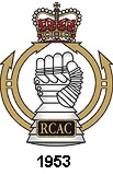 An equally important role is to foster esprit-de-corps. Significant to this goal is the preservation of the illustrious heritage of the corps. When the RCAC School was moved from Camp Borden to Camp Gagetown in 1970, the peerless collection of armoured fighting vehicles and other artifacts accumulated by the RCAC Museum was entrusted to the CFB Borden Military Museum. Base authorities have now embarked upon an ambitious revitalization program, and the association is committed to raising substantial sums in aid of this important endeavour.
An equally important role is to foster esprit-de-corps. Significant to this goal is the preservation of the illustrious heritage of the corps. When the RCAC School was moved from Camp Borden to Camp Gagetown in 1970, the peerless collection of armoured fighting vehicles and other artifacts accumulated by the RCAC Museum was entrusted to the CFB Borden Military Museum. Base authorities have now embarked upon an ambitious revitalization program, and the association is committed to raising substantial sums in aid of this important endeavour.
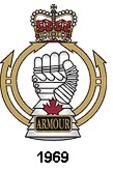 Though many units have published individual histories, the accomplishments of the corps and its antecedents were not recorded in comprehensive form. In the Diamond Jubilee year of 2000, the association published an illustrated history as its 60th anniversary project. An appeal in support of the history and the museum realized substantial funds from units, life members and corporate donors. Nearly 1,000 copies of the volume have been deposited in public libraries across Canada under the auspices of the Department of National Defence Millennium Fund.
Though many units have published individual histories, the accomplishments of the corps and its antecedents were not recorded in comprehensive form. In the Diamond Jubilee year of 2000, the association published an illustrated history as its 60th anniversary project. An appeal in support of the history and the museum realized substantial funds from units, life members and corporate donors. Nearly 1,000 copies of the volume have been deposited in public libraries across Canada under the auspices of the Department of National Defence Millennium Fund.
 Esprit-de-corps is further heightened through recognition of individual and unit excellence by means of competitions, peer assessments, formal examinations and rigorous field appraisals. The sense of family among serving and former members is strengthened through periodic information updates, policy deliberations, exchanges of views with other service associations and opportunities to visit with units and view operations in the field. An annual highlight is the corps conference, held at selected military bases across the country to enable maximum regional participation.
Esprit-de-corps is further heightened through recognition of individual and unit excellence by means of competitions, peer assessments, formal examinations and rigorous field appraisals. The sense of family among serving and former members is strengthened through periodic information updates, policy deliberations, exchanges of views with other service associations and opportunities to visit with units and view operations in the field. An annual highlight is the corps conference, held at selected military bases across the country to enable maximum regional participation.
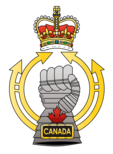
By using this site, you agree to our terms and conditions.
© 2020 Royal Canadian Armoured Corps Association